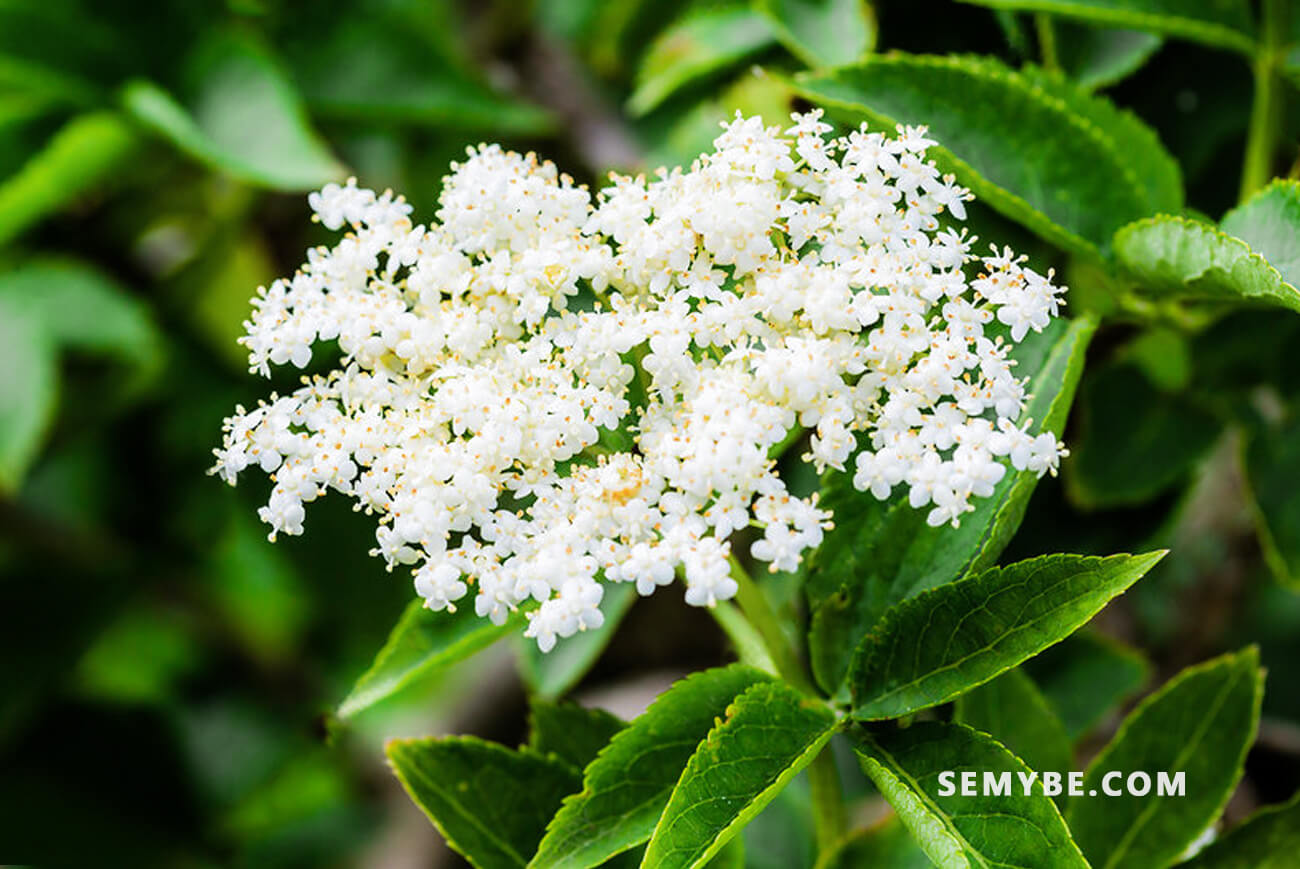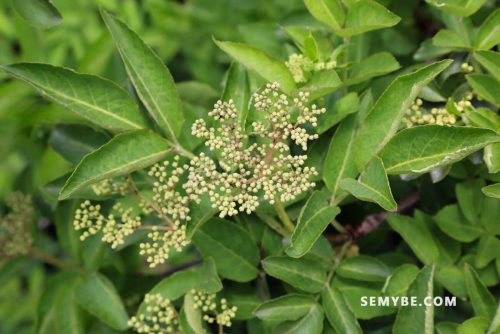
Sambucus Nigra
1. History and use
Originally from Central Europe, elderberry is particularly widespread in Switzerland and in all parts of Europe with a mild climate: Asia Minor, Caucasus and Siberia, and has been used for many centuries in medicine for its virtues. It is also appreciated for the taste values of its fruits, since its black berries have been eaten since Roman and Greek times. When they represented the food of the gods, and later Celtic and Germanic civilizations regarded elderberry as a plant magical with beneficent powers and used mainly for its anti- inflammatory and diuretic action. It was even used for cosmetic purposes to lighten the complexion and reduce freckles.
2. Description of the plant
Elderberry is a shrub resistant, can live a hundred years, found mainly without wooded areas, hedges or roadsides. Its flowering occurs from early May to August, belonging to the caprifoliaceae family, such as honeysuckle or camberberry.
Elderberry is an herbaceous plant that measures an average of two meters and has a branching stem with deciduous leaves of about seven leaflets, white and fragrant, open at the beginning of May, leaving in July to bunches of small black berries that become toxic once mature.

3. Curative action internal
- Use
Seasonal viral respiratory infections (colds, flu, sinusitis, etc), bronchitis, fevers, gastrointestinal disorders, water retention, cystitis and urinary infections, oral irritation (laryngitis), pharyngitis, stomatitis, etc.)
- External use
Against certain skin conditions: eczema, hemorrhoids, bruises and burns.
4. Usual therapeutic indications
Elderberry is indicated against overweight problems: its depurative properties help cleanse and purify the body by forcing it to eliminate toxins, its medicinal properties are also used against rheumatism, arthritis and osteoarthritis, to relieve joint pain. It’s also, more globally, a profitable plant to strengthen the immune system, and elderberries, they are full of anthocyanins, providing antioxidant power antiradical and antiangiogenic.
- Uses
In herbal tea, infusing two teaspoons of dried elderflower into hot water.
In decoction, by boiling hot water with leaves and peel. For filtration, consume up to three cups daily. This decoction can also be done with berries only (1 teaspoon of dried berries).
For external use (skin conditions, hemorrhoids, joint pain, etc.), soak compresses in these homemade preparations and apply them locally. Applied as a poultice, the berries can be used to relieve bruising, toothache and burns.




